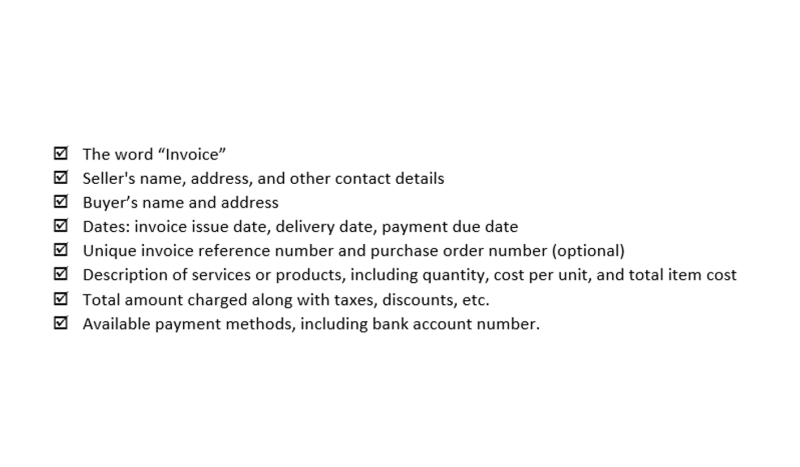
Production costs are typically expensed as incurred, directly impacting the income statement. Effective management of production costs is vital for maintaining profitability, especially in a market characterized by volatile commodity prices. Companies often employ cost-control measures and technological advancements to optimize production efficiency and reduce expenses, thereby enhancing their financial performance. Unlike standard accounting systems, oil and gas accounting software caters to the specific needs of the energy sector. From managing joint ventures to upstream operations, these systems are designed to handle the industry’s complexities, making them indispensable for oilfield service providers and operators. The effect of choosing one accounting method over another is apparent when periodic financial results involving the income and cash flow statement are compared.

What Are Successful-Efforts and Full-Cost Accounting?
Each method highlights the individual costs, which fall into the categories of acquisition, exploration, development, and production, differently. However, such a comparison also points out the impact on periodic results caused Oil And Gas Accounting by differing levels of capitalized assets under the two accounting methods. Conversely, because there is no change in productive assets with unsuccessful results, companies should expense costs incurred from those efforts.
Principles of Oil and Gas Accounting

We discuss some of the publications in the second quarter below and encourage companies to monitor the CAQ website for current resources. It ensures transparency, aids in regulatory adherence, and provides stakeholders with reliable financial information. Exact accounting data is critical for evaluating project economics, making informed investment decisions, and planning for the future. It enables companies to assess project viability, allocate resources efficiently, and make strategic decisions that contribute to long-term success in the industry. It is an even more useful measure when assessing companies that invest large amounts of capital, like oil & gas businesses, big box stores, and computer hardware firms.
AccountingTools
- KPMG helped a supermajor oil and gas producer with a market response initiative (MRI) to extract billions of dollars from its supply chain in a market downturn.
- GAAP is dynamic, and the FASB continually updates and issues new standards to address emerging issues and improve the quality of financial reporting.
- This estimation is crucial as it directly impacts the rate at which costs are allocated over the productive life of the asset.
- Therefore, the accounting method is an important consideration when analyzing companies involved in the exploration and development of oil and natural gas.
- When you project a natural resource company’s statements, you begin by projecting its production by segment based on its reserves and its historical patterns.
In SE, costs are capitalized based on whether the well is successful or not (i.e., hydrocarbons are produced). Other costs, such as geological and geophysical costs, are mostly expensed as incurred. At EAG Inc., we think of “best practices” as the set of techniques and procedures that allow you to produce the most efficient results with the least number of resources.
- Yes, some PE firms do focus on energy and mining, but typically they stick to utility and/or power generation companies rather than unpredictable E&P companies.
- Stakeholders rely on financial statements to assess the financial health of oil and gas companies.
- Revenue recognition in oil and gas accounting can be complex due to factors such as production-sharing agreements, joint ventures, and royalty payments.
- Enterprise Resource Planning (ERP) systems are essential for government contractors, helping streamline operations and improve efficiency.
- IFS ERP offers seamless integration across financial, operational, and asset management functions, enabling energy companies to manage everything from exploration and production to revenue accounting and financial reporting.
- Adherence to accounting standards and compliance with regulations is essential to avoid legal issues, ensure regulatory compliance, and maintain industry integrity.
Minister O’Regan Launches $750-Million Fund for Oil and Gas Companies to Reduce Methane Emissions
Tools like SAP S/4HANA and Oracle Financials Cloud are commonly used to navigate these complexities, providing real-time updates and analytics to support accurate financial reporting. One of the key aspects of joint venture accounting is the use of joint interest billing (JIB) statements. These statements provide a detailed breakdown of costs incurred and revenues generated, which are then allocated to each partner based on their ownership percentage. Accurate JIB statements are essential for maintaining transparency and trust among joint venture partners. Companies often employ specialized software like Quorum Joint Venture Accounting or P2 BOLO to manage these complex transactions, ensuring that all parties receive timely and accurate financial information. Understanding the unique terminology and principles in oil and gas accounting is fundamental for anyone involved in the industry.
Key Concepts in Oil and Gas Accounting
- You measure the company’s reserves (how much they have on their balance sheet, ready to extract, produce, and sell) and production (how much they produce and sell each day, month, quarter, year, etc.) in these units.
- The best oil and gas accounting software not only ensures compliance but also streamlines accounting processes to enhance profitability.
- Each of these has its own unique set of departments that handle the various entries and procedures to ensure costs and revenue are accounted for properly.
- The software also facilitates real-time reporting, making it easier for companies to stay compliant with industry regulations.
- Under the equity method, an investor recognizes its share of the joint venture’s net income or loss in its financial statements, reflecting its investment in the venture.
- Assets are generally recorded at their original cost, which is the amount paid to acquire them.
Companies record exploration costs capitalized under either method on the balance sheet as part of their long-term assets. This is because, like the machinery used by a manufacturing company, oil and natural gas reserves are considered productive assets for an oil and gas company. Generally accepted accounting principles (GAAP) require that companies charge costs to acquire those assets against revenues as they https://www.bookstime.com/ use the assets. One of the unique aspects of taxation in this sector is the concept of “ring-fencing,” where the tax liabilities of a company’s oil and gas operations are isolated from its other business activities. This prevents companies from offsetting losses in other sectors against profits from oil and gas operations, thereby ensuring that the government captures a fair share of the resource rents.

One of the primary concepts is the distinction between upstream, midstream, and downstream activities. Upstream activities involve exploration and production, midstream covers transportation and storage, while downstream includes refining and marketing. Each segment has its own accounting nuances, making it essential to grasp these differences for accurate financial reporting.





Neueste Kommentare